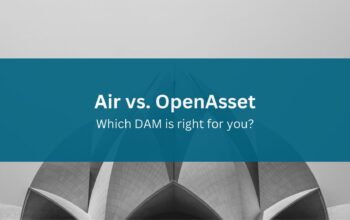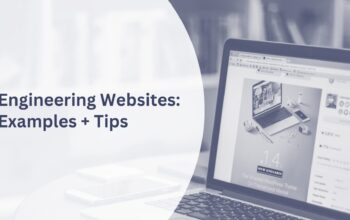Managing marketing collateral across large teams can become complicated as offices expand and new colleagues join the firm. In order to enable all teams to utilise digital assets such as images, videos and graphics, you will need a seamless content creation and distribution process. This process can be challenging amongst a complex organisation with multiple offices and the use of external agencies. Plus with a larger team of contributors adding to your digital assets, keeping track and finding assets can become exponentially difficult.
Some firms may still be using traditional methods of sharing content such as via Email and WeTransfer, these methods may not always be ideal for maintaining your firms brand guidelines and standards. Many large organisations struggle to keep track of updated marketing collateral such as logos and templates which can delay processes and communications as well as unnecessary errors to occur. An objective for marketing firms in these multi-office organisations may be to control which collateral should be shared whilst giving colleagues the ability to create their own brochures, presentations and other materials using approved templates, graphics and images. Another objective for your team may revolve around being able to quickly and efficiently access collateral remotely and from a different location. This might be due to continued expansion across the globe, which means templates for collateral such as letterheads, email signatures and brochures may need to be formatted to the local language.
A Digital Asset Management (DAM) system can help marketing teams make their collateral production more transparent in a time efficient way. As well as, creating a seamless collaboration process and maintaining brand guidelines whilst maximise the use of all digital assets. With a DAM, you and your colleagues can upload and download your digital assets such as your high-resolution images and videos as well as brochures and logos. Whilst the main function is to essentially store your assets and making sharing easier, a DAM like OpenAsset also has many other functions which are particularly useful to marketing teams within large organisations. Here are the top 5 benefits of a Digital Asset Management system:
Efficiently Produce Marketing Content
When creating collateral in InDesign, you may need to download your assets from software such as WeTransfer or Google Drive. However, a DAM like OpenAsset is integrated with InDesign which means users can open their image straight from their DAM without having to download their files. You can also preset your InDesign templates which ensures your links aren’t broken and you avoid accumulating clutter on your desktop with unnecessary download files. Another benefit of the preset InDesign templates is that other colleagues across the firm can make use of them without having to request for the files. For example, Sales teams can simply produce their own brochures and collateral using the preset templates and approved marketing images, which allows you and your team to spend more time to focus on strategies and other marketing efforts instead of worrying about if anyone is using outdated templates.
On-Demand Download
Producing multiple types of content will require a variety of image sizes. Manually resizing your high-resolution images can become a tedious task which can be easily resolved with a DAM. OpenAsset has incorporated the automatic image resizing option which means creatives can save time by selecting the sizes they require and downloading their resized images onto their desktop. This feature is not only ideal for creating content but it is also useful for social media content. Users can specify their required sizes for images during their onboarding process which will also be available to all other users within your firm.
Ensuring Consistency and Control with Brand Guidelines
Across many organisations, the marketing team may be responsible for approving and distributing images, videos and graphics to be used by other teams. OpenAsset has simplified this process by creating the Access Level system. OpenAsset admins can choose the access level per team for each asset or project, which can reduce the risk of your colleagues using unapproved assets or outdated files. For example, this efficient workflow will enable the marketing team to access all files within their DAM, but other teams such as Sales and Business Development may only have access to the latest version of an image or video. You can also ensure all teams across the firm are producing content within the brand guidelines by removing access to outdated logos and templates and replacing them with the new assets. Ideally, this would reduce confusion and eliminate assets being misplaced on your drive.
Centralized Storage with Easy Access
Collaboration between teams, leadership and external agencies can be a challenge, especially when you have time constraints. The time spent between sharing and approving collateral for a project can become prolonged, however, you can reduce this time by implementing a DAM. The main benefit of a DAM is that it is a centralized storage system which enables easy access for all teams across the firm. This means that when working on a project, final versions can be saved onto the system for approval without having to send the file across in an email. External creatives can also be given limited access to your DAM so they can upload assets and view collateral which you have approved for them. Those in leadership, sales or business development roles can easily access logos, high-res images and videos to produce presentations with ease, this eliminates any need for requesting digital assets from the marketing team as they will have access to the approved files on your OpenAsset system.
Find Assets with Ease
OpenAsset has been built with the AEC & Real Estate sector in mind, which is why you can organise your assets by projects and keywords. Users can upload and tag their digital assets with keywords which consistency with the image or video. For example, you can select which location and year the image was taken in as well as which materials or buildings are present in the asset. Users can search for these terms and the results will show all the assets which have been tagged with those specific keywords. This will save time for users when searching for images as compared to searching on their local drive. Another time-saving feature in OpenAsset is our Image Similarity Search. By integrating artificial intelligence into OpenAsset, users can select an image in their DAM, and the Image Similarity Search feature will allow you to discover a selection of images which identify as being visually similar. This feature can be beneficial to those working in the AEC & Real Estate industry as you will be able to establish familiarities between projects, buildings and architectural designs. This tool can save you and your team time when creating proposals as you will no longer have to manually search through images to find similar projects.
Overall, your digital assets will continue to grow as your firm and team expand. It is essential to manage and organize your digital assets in order to maintain your marketing out and ensure digital assets are being reused. A Digital Asset Management system can cater to the needs of a large multi-office organization as well as an SMB. Whilst there are various DAM systems available, it is important to remember the needs of your firm and finding one which has an array of features better suited to the AEC & Real Estate sector.



